
The concept of employee engagement has the potential to radically change a business – for the better. In this article, we take a look at what it is, why it matters – and how to make it work in the age of the hybrid workplace.
The Persona behind the Persona is an Employee
For many years enterprises have been focusing on delivering superior customer engagement and experience; with the main purpose of keeping their customers happy across the moments in their journey. And, it did pay off the business with a domino effect of an increase in customer loyalty that in return elevated the business revenue resulting in a strong brand.
But we tend to ignore the fact that the person spearheading the operations to deliver consistent customer experience is an employee that also needs to be motivated to bring consistent energy and effort to the job which in return leads to excellence in customer experience. So how do we keep the employee happy? In Figure 1 and the below section, you see some of the trends that emphasise the need of embracing employee engagement and experience practice across the modern workplace.
Trending global imperatives across the workplace
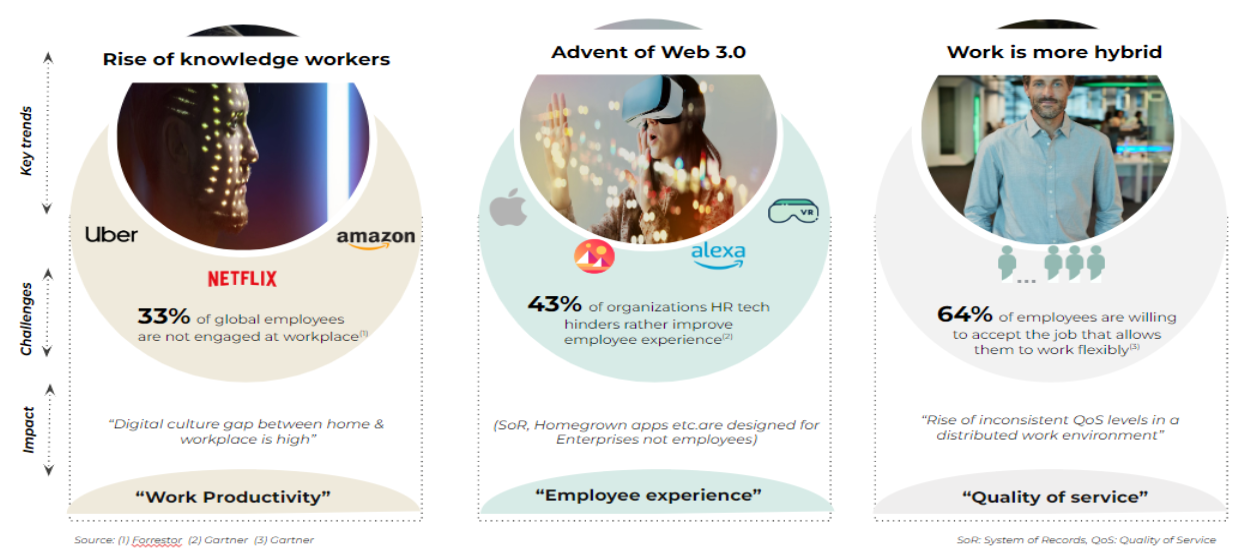
1. The rise of the knowledge worker
The first is the rise of the knowledge worker, the 21st-century version of the white-collar employees. These people are used to convenience and on-demand services like Uber, Netflix and Amazon. Knowing what is possible in their personal lives, many expect similar frictionless access to services and information in the workplace.
However, many enterprises are failing to deliver on knowledge worker expectations. According to Forrester, this has left 33% of employees worldwide not engaged at work.
2. The advent of Web 3.0
Web 3.0 technologies like the Metaverse, blockchain, NFTs, cryptocurrencies, digital wallets, blockchain ledgers etc. is envisioned as the Web built by users for themselves, where they are in full control of their transactions and this is where the knowledge workers are living today.
Inside the workplace, however, the picture is very different. Systems like ERP, CRM, HR and finance exist in isolation, creating silos that prevent visibility and hinder collaborative productivity. When employees need a service, they are directed to send an email to a shared inbox where someone will (eventually) access their request. The systems are designed for the interests of the business; employee engagement is of secondary concern.
Again, the effects are profound. 43% of organisations say that their HR technology hinders rather than improves the employee experience for instance.
3. Hybrid work is the new normal
Following the pandemic, hybrid working is becoming increasingly common. Indeed, knowledge workers want to spend at least part of their week working remotely – 64% of employees will prioritise the job offer that allows them to also work remotely.
This creates tremendous pressure on organisations, not only to deliver the core services required for productivity but also in terms of keeping people engaged. The quality of services delivered to customers and employees will suffer if employers are not able to get the right processes and technology in place.
Employee engagement at the rescue that demands a change in mindset
Employee engagement is more than simply keeping an employee to stay longer, however, it is a wide-ranging strategy that focuses on creating an environment where people can continuously improve and excel. This culture encourages everyone to deliver their best every day – and to drive greater business success.
However, the interpretation of employee engagement varies from enterprise to enterprise. Some try to trigger the motivation spark in an employee through rewards and compensation, some through loyalty and wellness programs, some through beautiful offices etc., with the objective of extending his intent to stay with the enterprise.
When an enterprise gets employee engagement right, employees experience more job satisfaction, improved well-being, and increased productivity that brings out “high performers” which in return helps in attaining business goals – and they are more likely to stay too.
This is possible by embracing a change in the mindset where enterprises think of employees as their own internal customers, and design moments that matter the most to their employees.
A need to move towards a value-driven employee engagement
Improving employee engagement drives significant benefits as illustrated in below figure 2:
- Productivity: Employees are empowered to focus on value-add activities that improve overall productivity.
- Quality of services: Employers are able to improve the quality of service they provide to their employees and deliver personalised experiences.
- Strategic agility: Enterprise becomes agile where everything is fast, gets measured and improved that in return increases the happiness levels of employees.
- Costs: Operational costs are reduced, which gives back time and equivalent money to enterprises which can be re-invested in growing the business operations.
These are not just theoretical gains either. According to Forrester Research, the effects are measurable – and substantial:
- Employee productivity increases by 30% throughout the employee lifecycle.
- x3 times faster time to value in delivering services and products that accelerate innovation with speed and agility.
- Employee satisfaction can increase up to 97%.
- $11M equivalent time saved per year with improved employee productivity.
Creating a universal system of connected happiness
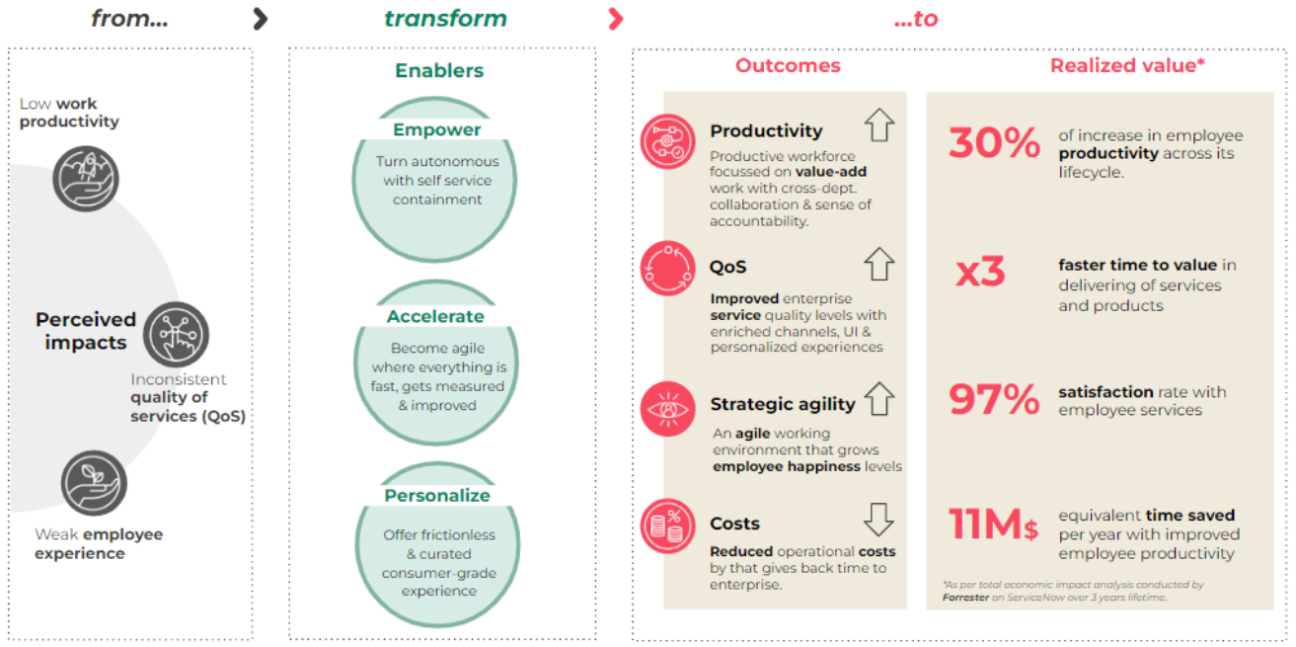
Further elaborating figure 2 above, an effective employee engagement strategy delivers on three fronts:
1. Empowerment
Giving employees tools to be more efficient – and self-sufficient – is a great way to drive engagement and productivity. With the ability to tap into any internal process – HR, IT, Legal, Supply chain, Facilities etc – employees and their managers can take control of their responsibilities without having to wait for other stakeholders.
The common attributes of an empowered employee are:
- Universal self-service: A universal help, knowledge and learning in one place.
- Guided journey management: Fully visible and measurable employee journeys.
- Voice of employee: Employee sentiments discovery and triggerable actions.
Supporting the guided journey management attribute, digital platforms such as ServiceNow empowers managers to create templated employee journeys, workflows, and interactions that can be personalized to deliver a more meaningful and connected experience while measuring employee sentiment in the moments that matter and delivering employee-centric learning experiences in the flow of work as illustrated in figure 3.
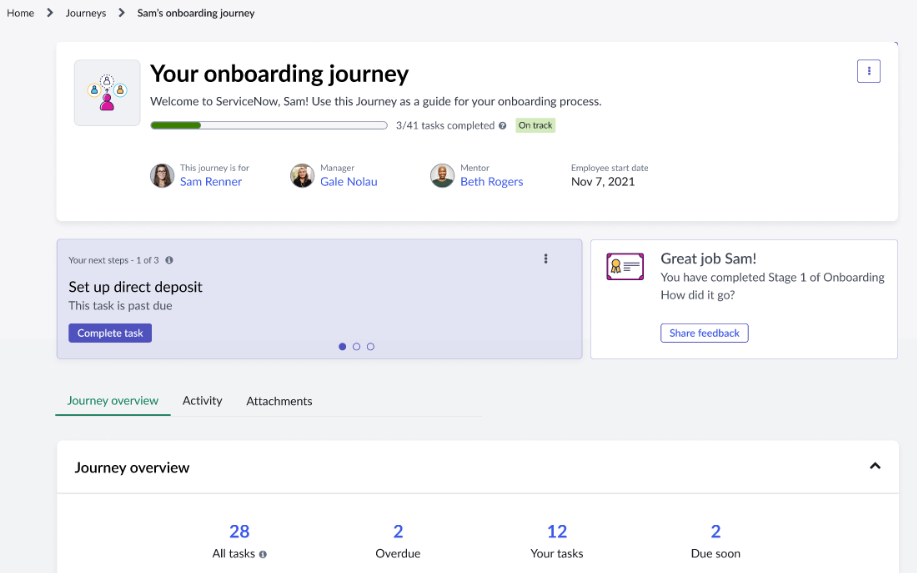
2. Acceleration
Acceleration is all about becoming agile where everything is fast, gets measured and improved. Ultimately, you will need to combine strategy and technology to accelerate the faster delivery of services and experiences to your employees. Choose the right platform and it is possible to deliver a consistent experience to employees any place, any time – including those working remotely.
The common attributes of an accelerated enterprise are:
- Seamless handover: End-to-end tasks orchestration between all departments.
- Rapid development and innovation: Roll out HR services, journeys, campaigns, and applications in no time.
- Processes optimization and improvement: Optimization of Hire-Retire processes is duly suggested.
- Workplace management: Reserve rooms, optimize spaces and manage the visitor experience.
Supporting the processes optimization and improvement attribute above, digital platforms such as ServiceNow illustrated in below figure 4, identifies bottlenecks, redundancies, and opportunities for automation of your hire-to-retire processes and beyond by replacing time-consuming manual analyses with automated, data-driven process maps to deliver faster time to value.
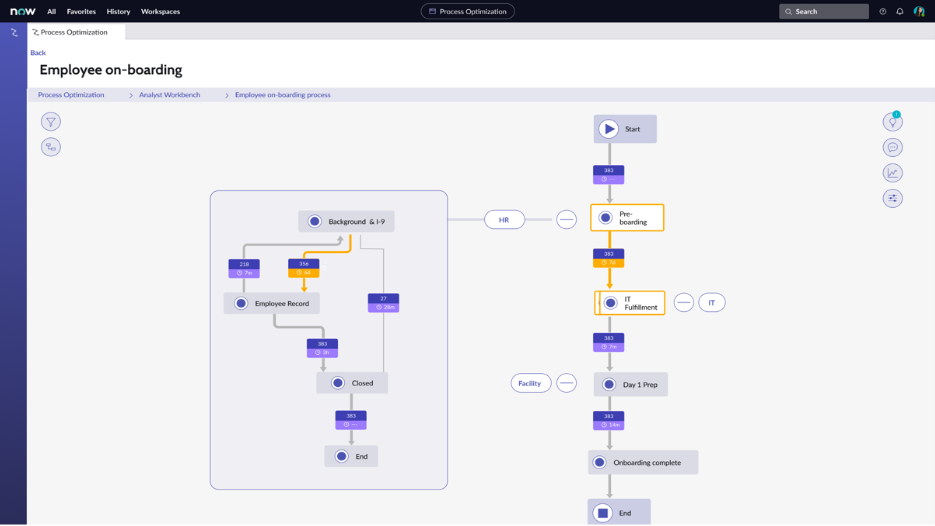
3. Personalisation
Employees value personalised services in the same way that paying customers do. In fact, the connected knowledge worker expects their employer to personalise their work experience. The potential for personalisation is almost limitless.
Using technology employers can easily collect feedback from their employers, allowing them to act on suggestions for improvement. They can provide an Amazon-like purchasing experience for requisitions. They can use enterprise knowledge and self-service to help employees get answers to their questions quickly.
The right technology will make it easy to build personalised, employee-centric processes.
The common attributes of a personalised experience are:
- Omni-channel engagement: Convenience to collaborate and get help from any channel (Portal, Mobile, Chatbot, Microsoft Teams, Zoom etc.)
- Curated content: Personalized content delivery aligned to the employee moments.
- Consumer-graded experience: “Google-like” search and wayfinding, “Amazon-like” shopping experience.
Supporting the consumer-graded experience attribute above, digital platforms such as ServiceNow as illustrated in figure 5, delivers an “Amazon-like” shopping experience where employees can quickly find what they need to order to get their job done. It also adds a layer of personalisation on top, where the employee can only see the items he is eligible to have based on the company policy.
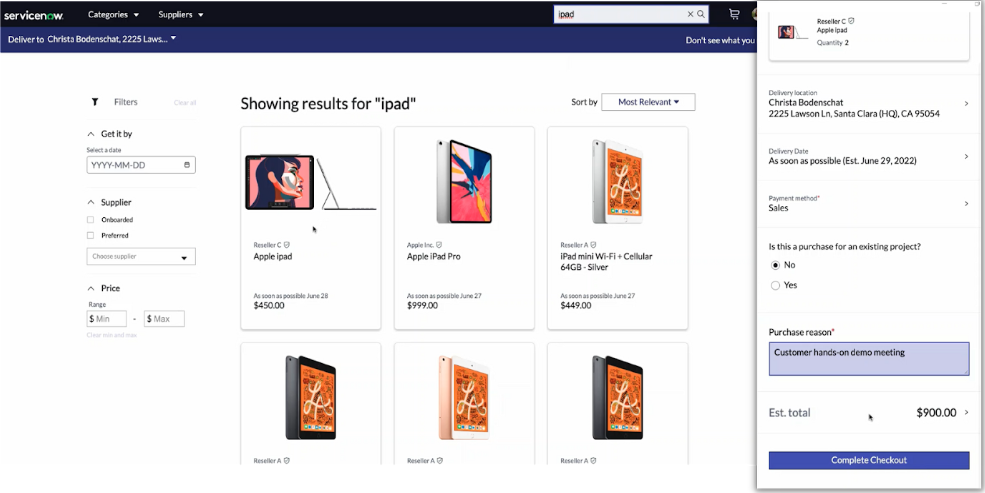
In Conclusion
As the workplace evolves, businesses will need to improve their employee engagement programs to maintain – or improve – productivity. To do this:
- Investigate the maturity of employee engagement in your organization and its correlation with business performance.
- Consider how your processes and platforms will need to be transformed to support hybrid workers and keep them engaged.
- Model and prioritize use cases that aligns with employee engagement priorities focussed on empowerment, acceleration and personalisation attributes.
- Influence organization culture for the adoption of employee engagement practices
- Learn the shift of changes in your workplace and business ecosystem that will have a profound impact on your employees – and continuously improve your employee engagement program.
Contact us! to know more about how we at Devoteam can help you in building an adaptive workplace strategy that elevates human-centric work engagement and drives business results.

Find this article interesting?
Check out our automation-led strategies are transforming employee and customer experiences e-book to learn more.